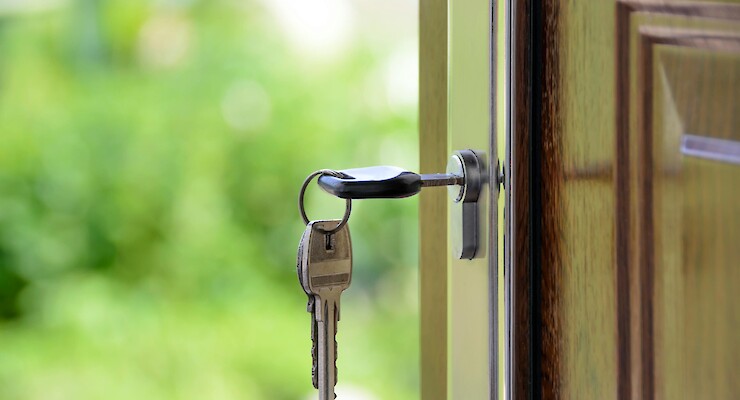
If you want to protect your home and belongings against unexpected events such as fire, theft or flooding, home insurance can provide valuable peace of mind.
In this guide, we explain how home insurance works in the UK, outline the different types of policies available, and share tips on where to find the most affordable quotes.
What is home insurance?
Home insurance is a type of financial protection that covers the cost of repairing or replacing your property and belongings if they are damaged, destroyed or stolen. It is one of the most important forms of insurance for homeowners, and in many cases it is also advisable – or even required – for tenants.
Home insurance usually has two main components:
-
Buildings insurance – Covers the structure of your property, including walls, roof, windows, floors and permanent fixtures such as kitchens, bathrooms and boilers. It provides protection against risks such as fire, storm damage, flooding and subsidence.
-
Contents insurance – Protects the possessions inside your home, such as furniture, appliances, electronics and personal belongings. It is particularly valuable for covering burglary, theft or accidental damage. As a rule of thumb, it applies to most items that could be taken with you if you moved house.
How does it work?
To keep your home insurance valid, you pay either a monthly or annual premium to your insurer. If an insured event occurs – for example, a burst pipe or a burglary – you can make a claim to cover the cost of repairs or replacements.
Most policies include an excess, which is the amount you agree to pay towards a claim. This typically ranges from £50 to £1,000. If your claim is approved, the payout you receive will depend on:
-
The level of cover you have chosen
-
Any single-item limits (the maximum payable for an individual item)
-
The total value of your belongings or the rebuilding cost of your home
-
The excess you have agreed to pay
It is important to read your policy documents carefully to understand exactly what is and isn’t covered. Some insurers also offer optional extras, such as:
-
Cover for possessions outside the home
-
Accidental damage cover
-
Alternative accommodation if your property becomes uninhabitable
Types of policies available
There are several ways to structure your home insurance policy, depending on your needs:
-
Buildings insurance
Covers the structure of your home and permanent fixtures. While not a legal requirement, most mortgage lenders insist on it as a condition of the loan. It typically protects against risks such as fire, flood, subsidence and storm damage. -
Contents insurance
Protects the belongings inside your home, from furniture and electronics to jewellery and clothing. Renters usually only need contents insurance, as the landlord should already have buildings cover. Optional add-ons often include accidental damage or cover for items taken outside the home. -
Combined buildings and contents insurance
Many homeowners opt for a combined policy, which covers both the building and its contents under a single plan. This can be simpler to manage and is sometimes more cost-effective than arranging separate policies. -
Specialist home insurance
Certain properties may require tailored cover, such as listed buildings, high-value homes, or holiday lets. These policies are usually arranged through specialist providers. -
Group or workplace schemes
Although less common than other employee benefits, some employers offer discounted home insurance through group arrangements. In addition, some insurers now provide ‘work from home’ policies designed for self-employed individuals or those working remotely.
How home insurance applications get assessed

When you apply for home insurance, insurers carry out an assessment of your property and personal circumstances to calculate risk and set the cost of your policy. Key factors include:
-
Property details – Insurers will ask about the age and type of property (house, flat, bungalow), the construction materials (standard or non-standard), and any special features such as a thatched roof or listed status.
-
Location risks – Your postcode is a major factor. Insurers will consider local crime rates, flood risk, subsidence history, and proximity to rivers or coastal areas. Homes in higher-risk locations may face higher premiums or limited cover options.
-
Rebuild cost and contents value – You will need to provide the rebuild value of your home (not its market value) and an accurate valuation of your contents. Underestimating these could leave you underinsured and reduce your payout in the event of a claim. Many policies also have single-item limits.
-
Level of cover and excess – Policies vary in scope, with different benefits and exclusions. You may be able to choose the level of excess you are willing to pay: a higher excess generally lowers your premiums, and vice versa.
-
Security measures – The security features of your home, such as locks, burglar alarms, CCTV or membership of a Neighbourhood Watch scheme, can influence premiums. Well-secured properties often qualify for discounts.
-
Previous claims history – Insurers will review your claims record. Frequent or recent claims can increase premiums or restrict your choice of providers.
-
Optional extras – Adding features such as accidental damage cover, contents cover outside the home, home emergency assistance or legal protection will increase your overall premium.
What is the average cost in the UK?
The cost of home insurance varies widely depending on your property and personal circumstances. To give you a rough guide, here are the latest average costs for home insurance from the Association of British Insurers (ABI):
|
Type of home insurance |
Average cost |
|
Buildings insurance |
£262 |
|
Contents insurance |
£124 |
|
Combined buildings and contents insurance |
£341 |
Factors such as your location, the size and value of your home, and the level of coverage you choose will all affect your final premium. Remember, the cheapest policy isn’t always the best; it’s essential to ensure you’re adequately covered for the unique risks you may face.
Best UK insurers for home insurance
The most suitable home insurance provider for you will depend on your budget, coverage needs and personal circumstances. Below are some examples of well-known UK insurers offering comprehensive policies:
-
Aviva – Standard cover includes protection against fire, theft, subsidence and weather damage, as well as alternative accommodation if your home becomes uninhabitable. Optional extras include accidental damage, legal services, home emergency cover and a protected no-claims discount.
-
Direct Line – Offers three levels of cover: Home Insurance, Home Insurance Plus and Select Premier. Buildings cover ranges from £1 million to unlimited, while contents cover ranges from £50,000 to unlimited. Conditions apply; for example, theft or damage may not be covered if your home is left unoccupied for more than 60 days.
-
LV= (Liverpool Victoria) – Provides three tiers of home insurance: Essentials, Home Insurance and Home Insurance Plus. Policies can include working-from-home cover, and repairs carried out by recommended contractors come with a 12-month guarantee.
If you are unsure which provider is best for your situation, speaking with a home insurance adviser can help you compare options and find the most suitable policy.
Frequently Asked Questions
Yes – temporary home insurance (also known as short-term home insurance) is available if you only need cover for a limited period. This can be useful in situations such as:
-
While renovation or building work is taking place
-
When you are waiting for a property sale or purchase to complete
-
If you are renting out your property on a short-term basis
Policies typically range from a few days to several months, providing flexible protection when a standard annual policy is not suitable.















